Appendix - roundabouts
Roundabouts are safe and simple if you know and use these rules.
Many drivers are satisfied with their own use of roundabouts, but believe others do it all wrong! Before criticising other drivers’ roundabout behaviour, check your knowledge of the rules.
Roundabouts
- when used properly, roundabouts can smooth traffic flow at busy junctions
- vehicles can enter and leave roundabouts by different roads with less inconvenience or danger
- they are really circular, clockwise one-way traffic systems enabling several traffic streams to mix
The rules for using roundabouts
Give way
The most important rule – when entering a roundabout, give way to traffic on the roundabout, unless road markings or signs say otherwise. If the way is clear keep moving. Stopping at a clear roundabout slows traffic and can cause frustrating delays.
A roundabout entrance is usually marked by a single broken line across the road. Sometimes you may find other markings.
At some roundabouts one traffic lane might be allowed to flow free; there will be road markings or signs to show this.
Speed
Approach so that you can stop and give way if necessary.
Approaching too fast could make other drivers on the roundabout think that you are going to drive in front of them. They could brake or swerve and perhaps cause a collision.
If you approach too fast and brake hard at a roundabout entrance you could also cause a collision by panicking a following driver who might skid into the back of your vehicle.
On the roundabout, you should drive according to road, weather and traffic conditions as well as the road-holding qualities of your vehicle.
Position and signals
Being correctly positioned and signalling clearly in good time helps other road users. Knowing and following the rules improves traffic flow and safety at roundabouts.
While this appendix provides general advice, other factors such as signs, road markings and the position and type of other vehicles can influence the choice of lane.
Where there are signs or road markings which indicate appropriate lanes, these should assume priority over the following procedures.
Correct roundabout procedure
Imagine that you are approaching a busy roundabout with six converging roads. Follow the advice in the diagrams and:
- treat the roundabout as if it were a clock face
- all movement on roundabouts is clockwise
- always assume that your approach is from the six o’clock position
- approach at the correct speed and in the right gear
- always signal your intentions clearly
- if there is no traffic at or on the roundabout you may take the shortest and most convenient route through it
- cancel your signal after leaving the roundabout
Now that you know the rules, show a good example to other drivers by following them every time. They may even copy your driving style and do it right too!
1. Taking the first exit (b) at 8 o’clock
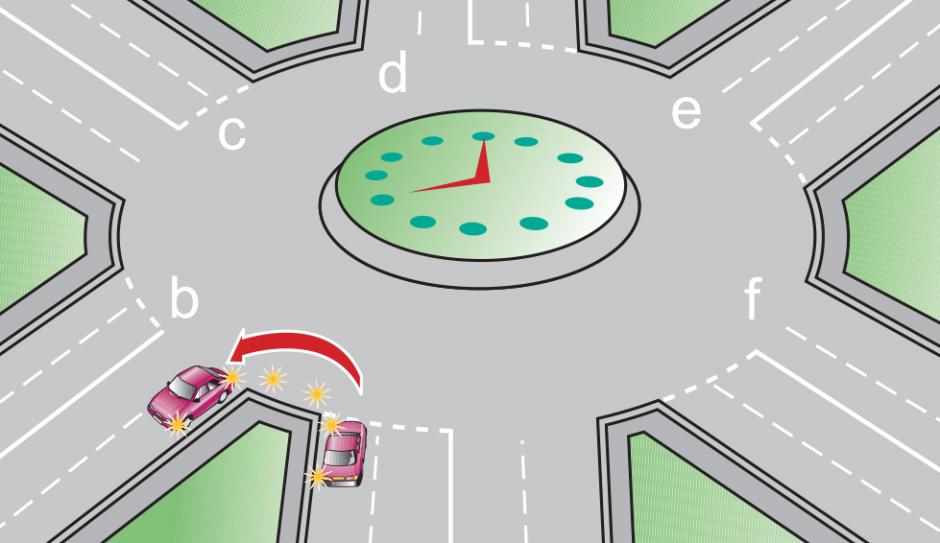
| Approach | Left lane |
|---|---|
| Signal | All-round observation and left-turn indicator on approach |
| On roundabout | Keep in left lane |
| Exit | Check mirrors before leaving roundabout and keep left-turn indicator going until just after leaving roundabout |
2. Taking the second exit (c) at 10 o’clock
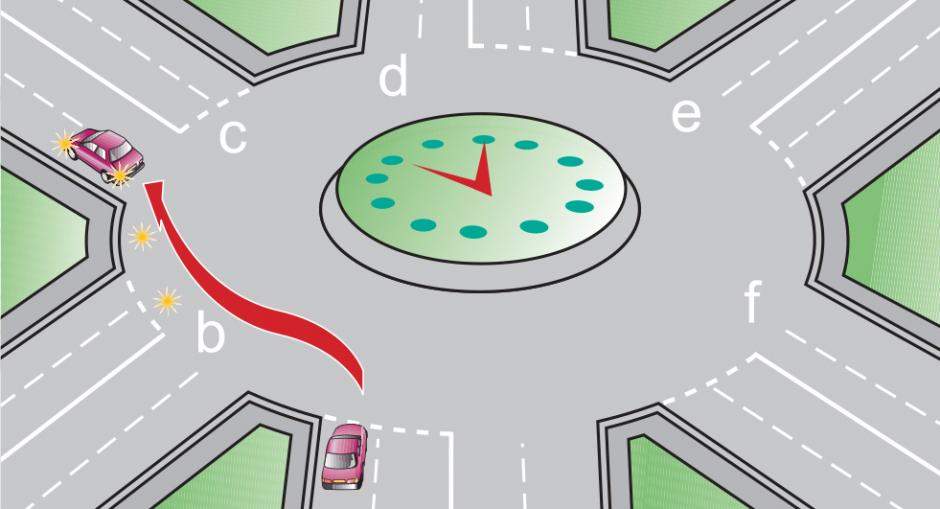
|
Approach |
Left lane |
|---|---|
| Signal | All-round observation; no approach signal |
| On roundabout | Keep in left lane |
| Exit | Check mirrors and indicate left when you have passed exit (b) before the one you want to take (c) |
3. Taking the third exit (d) at 12 o’clock
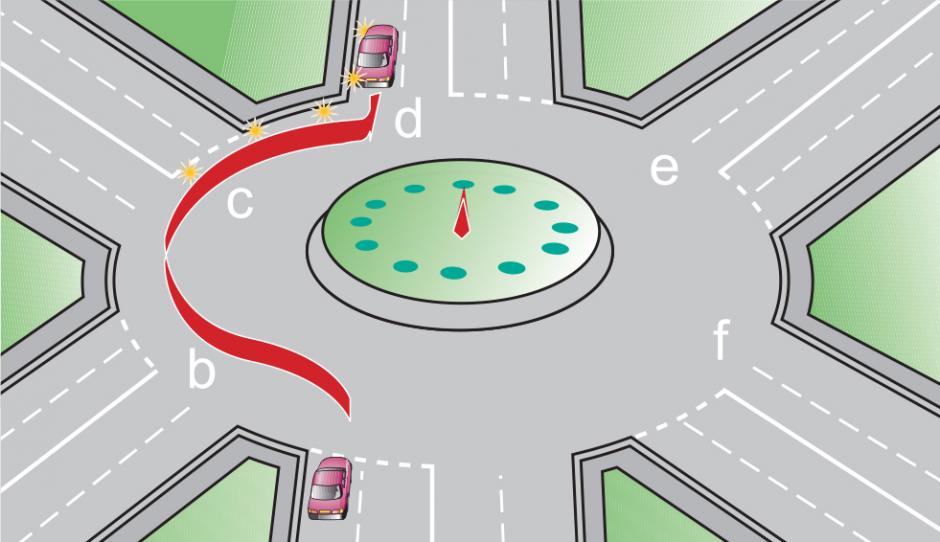
|
Approach |
Left lane |
|---|---|
| Signal | No approach signal |
| On roundabout | Keep in left lane (use right lane if approach was in right lane) |
| Exit |
Check mirrors and indicate left when you have passed exit (c) before the one you want to take (d) |
4. Taking the fourth exit (e) at 2 o’clock
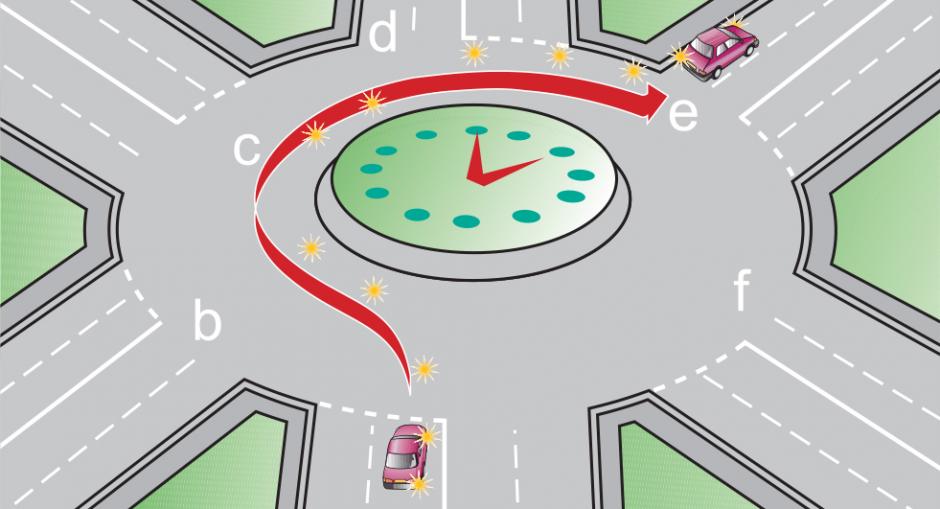
| Approach | Right lane |
|---|---|
| Signal | All-round observation and indicate right on approach |
| On roundabout |
Keep in right lane near centre of roundabout; keep right-turn indicator going |
| Exit |
Check mirrors and change to left-turn indicator when you have passed exit (d) before the one you want to take (e). Check mirrors, glance over left shoulder and ease into left lane for exit (e) |
5. Taking the fifth exit (f) at 4 o’clock
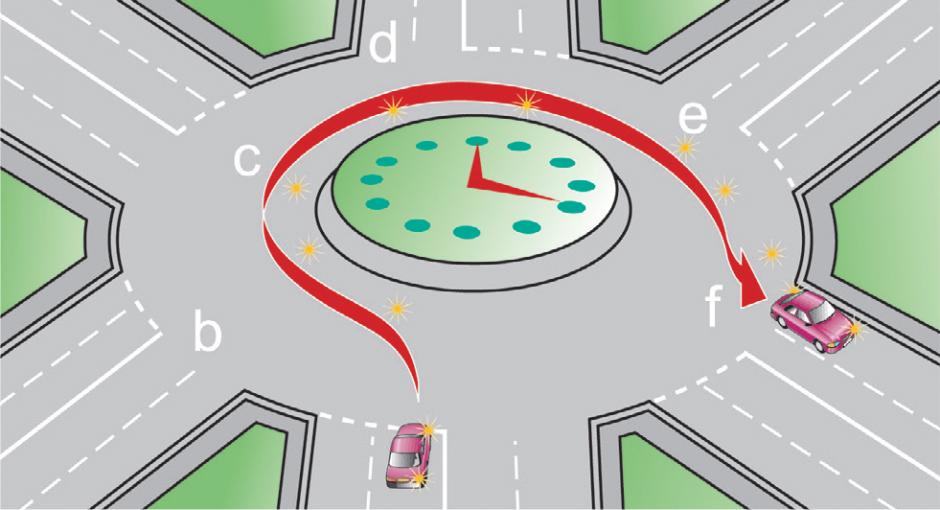
| Approach | Right lane |
|---|---|
| Signal |
All-round observation and indicate right on approach |
| On roundabout | Keep in right lane near centre of roundabout; keep right-turn indicator going |
| Exit | Check mirrors and change to left-turn indicator when you have passed exit (e) before the one you want to take (f). Check mirrors, glance over left shoulder and ease into left lane for exit (f) |